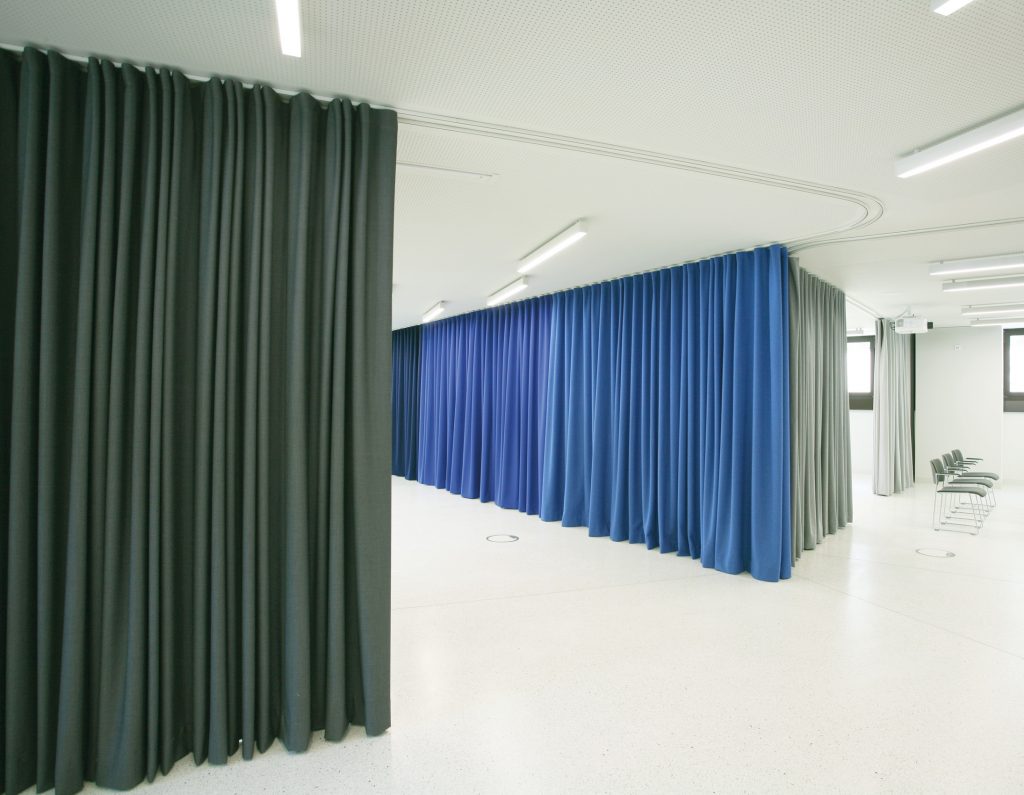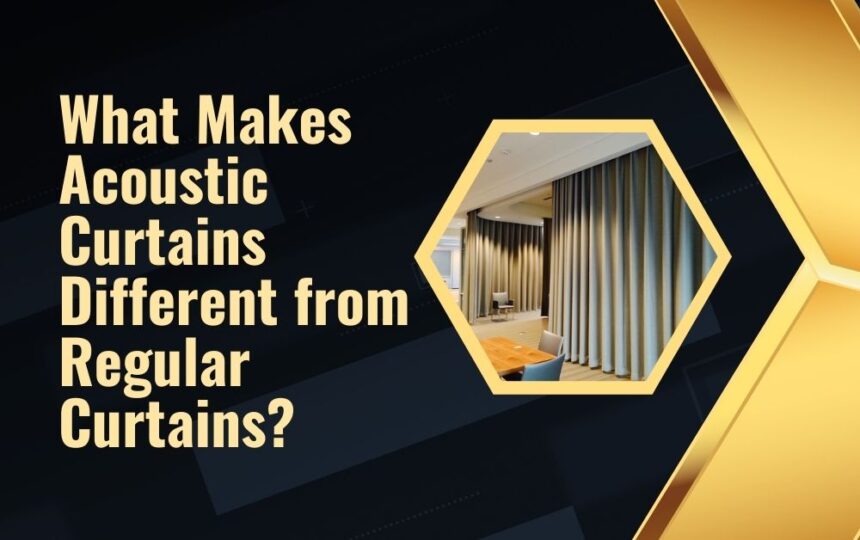Curtains are an important part of any home or office. They add style, control light, and help create a cozy atmosphere. However, when it comes to sound, regular curtains often fall short. This is where acoustic curtains come in. Acoustic curtains are designed not just for decoration or privacy, but to reduce noise and create a quieter space. In this blog, we will explore what makes acoustic curtains different from regular curtains, how they work, and why they could be a great addition to your home or office.
The Main Purpose of Regular Curtains
Decoration and Light Control
Regular curtains are primarily used for decoration and controlling light. They come in various fabrics, colors, and styles to match different tastes and interior designs. Whether you want sheer curtains to let in some natural light or blackout curtains for complete darkness, regular curtains give you plenty of options. They are great at helping manage sunlight and can provide privacy, but that’s where their functionality usually ends.
Basic Insulation
Some regular curtains can offer a bit of insulation, helping to keep rooms warmer in the winter or cooler in the summer. However, the insulation they provide is often minimal, depending on the thickness of the fabric. They might make a slight difference in temperature control but are not designed to impact sound levels.
Lack of Sound Control
While regular curtains may help muffle some noise, they are not effective at reducing sound in a meaningful way. The fabric of regular curtains is usually too thin to block or absorb sound waves, which is why you can still hear traffic, neighbors, or other noises even with the curtains closed. For people who live in noisy environments or want a quieter space, regular curtains just aren’t enough.
Note – Discover how an Acoustic Curtain from Perfect Acoustics can transform your space into a peaceful, noise-free environment. Take the first step toward better sound control by exploring the range of solutions available today!
What Are Acoustic Curtains?
Designed for Sound Reduction
Acoustic curtains, also known as soundproof curtains, are specifically designed to help reduce noise. Unlike regular curtains, which focus more on aesthetics and light control, acoustic curtains are made with thick, dense materials that block and absorb sound. This makes them ideal for anyone who wants to reduce the amount of noise coming into or leaving a room.
Acoustic curtains can be used in homes, offices, recording studios, and other places where sound control is important. They are particularly useful in spaces where noise from traffic, construction, or other external sources is a problem. They work by creating a barrier between the outside noise and your indoor space.
How Do Acoustic Curtains Work?
The secret to the effectiveness of acoustic curtains lies in their construction. These curtains are made from several layers of heavy fabric, often with sound-absorbing materials like vinyl or fiberglass sewn into the layers. This creates a thicker curtain that can trap sound waves and stop them from bouncing around a room. In simple terms, they stop sound from getting in or out by absorbing it.
Acoustic curtains do not block 100% of the noise, but they can significantly reduce it. The amount of noise reduction depends on the thickness of the curtain, the type of fabric, and how well they are installed. For the best results, they should be hung from ceiling to floor and fit tightly against the wall to minimize gaps where sound can get through.

Key Differences Between Acoustic Curtains and Regular Curtains
Material and Thickness
One of the biggest differences between acoustic curtains and regular curtains is the material and thickness. Regular curtains are usually made from lighter fabrics like cotton, linen, or polyester. These materials are great for adding color and texture to a room but are not thick enough to block sound. Acoustic curtains, on the other hand, are made from much thicker materials designed to block and absorb sound. These fabrics can include dense weaves or multiple layers of heavy materials like velvet, suede, or specially designed soundproof fabrics.
Sound Reduction Capability
As mentioned earlier, regular curtains do little to control noise. Acoustic curtains are specifically designed to reduce noise by absorbing and blocking sound waves. If you’re looking to reduce noise pollution from outside or keep sound within a room, acoustic curtains are a much better choice. The difference in sound reduction between the two types of curtains is quite noticeable, especially in noisy environments.
Weight and Installation
Acoustic curtains are typically much heavier than regular curtains. This is due to the dense materials used to create the soundproofing effect. As a result, they may require stronger curtain rods and more secure installation. Regular curtains, being lighter, are easier to install and usually don’t require special hardware.
It’s also important to note that acoustic curtains need to be hung properly to be effective. They should extend from the ceiling to the floor and cover the entire width of the window, with minimal gaps. This ensures that the maximum amount of sound is blocked. Regular curtains don’t require this level of precision in installation since sound reduction isn’t their primary function.
Cost and Investment
Because of the materials and construction involved, acoustic curtains are generally more expensive than regular curtains. However, for people who value peace and quiet, they are a worthwhile investment. If you live in a noisy area or have rooms where controlling sound is important, the extra cost can be justified by the significant noise reduction they provide. Regular curtains are less expensive and serve their purpose well in spaces where noise isn’t a major concern.
When to Use Acoustic Curtains
For Noisy Environments
Acoustic curtains are perfect for people who live in busy urban areas or near noisy streets. They help block out the sound of traffic, construction, and other outdoor noises, making your home a more peaceful place to relax. They’re also great for people who work from home and need a quieter environment to focus.
For Home Theaters or Studios
If you have a home theater or recording studio, acoustic curtains can help improve sound quality by absorbing echoes and reducing external noise. This creates a better listening experience and can also help prevent sound from disturbing others in the house or neighborhood.
For Office Spaces
In office environments, acoustic curtains can be used to create quieter meeting rooms or workspaces, especially in open-plan offices where noise can be distracting. They can also help reduce noise between rooms, improving focus and productivity.
Conclusion
Acoustic curtains are a practical solution for anyone looking to reduce noise in their home, office, or other spaces. While regular curtains are great for decoration and light control, they simply don’t have the ability to reduce sound effectively. Acoustic curtains, with their thicker materials and sound-absorbing design, offer a significant advantage when it comes to noise reduction. Whether you’re dealing with traffic noise, loud neighbors, or simply want a quieter space, acoustic curtains are a smart investment that can make a noticeable difference.
For more insightful articles related to this topic, feel free to visit newsdusk.com


